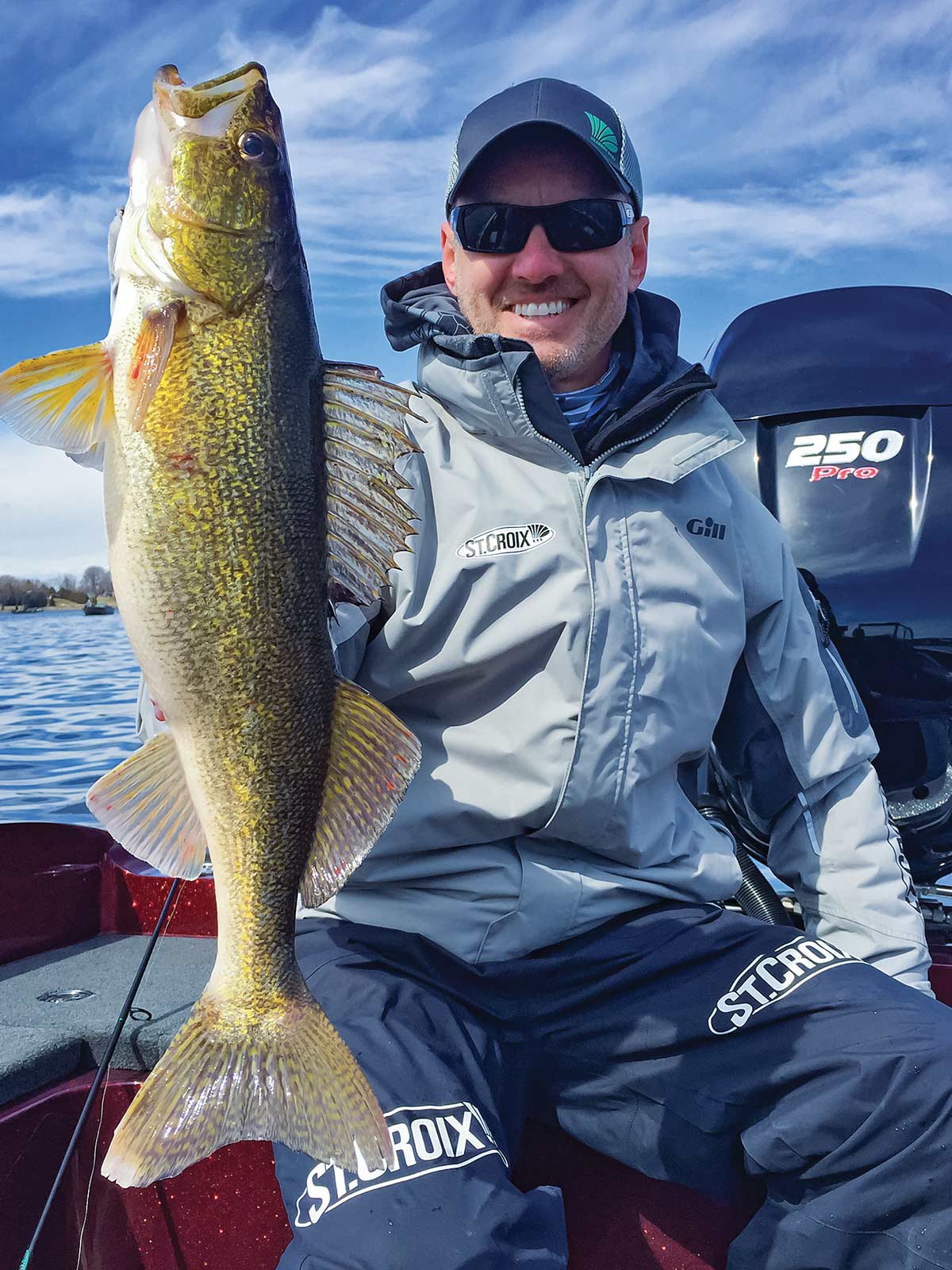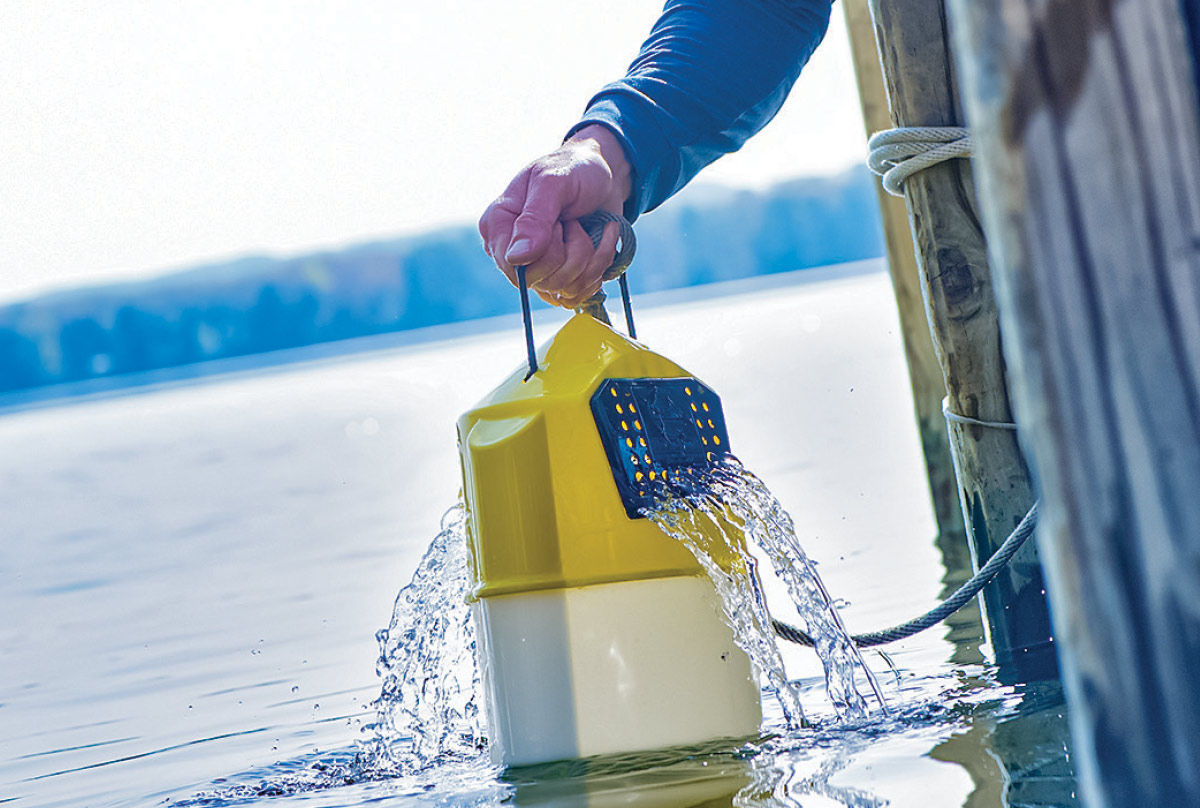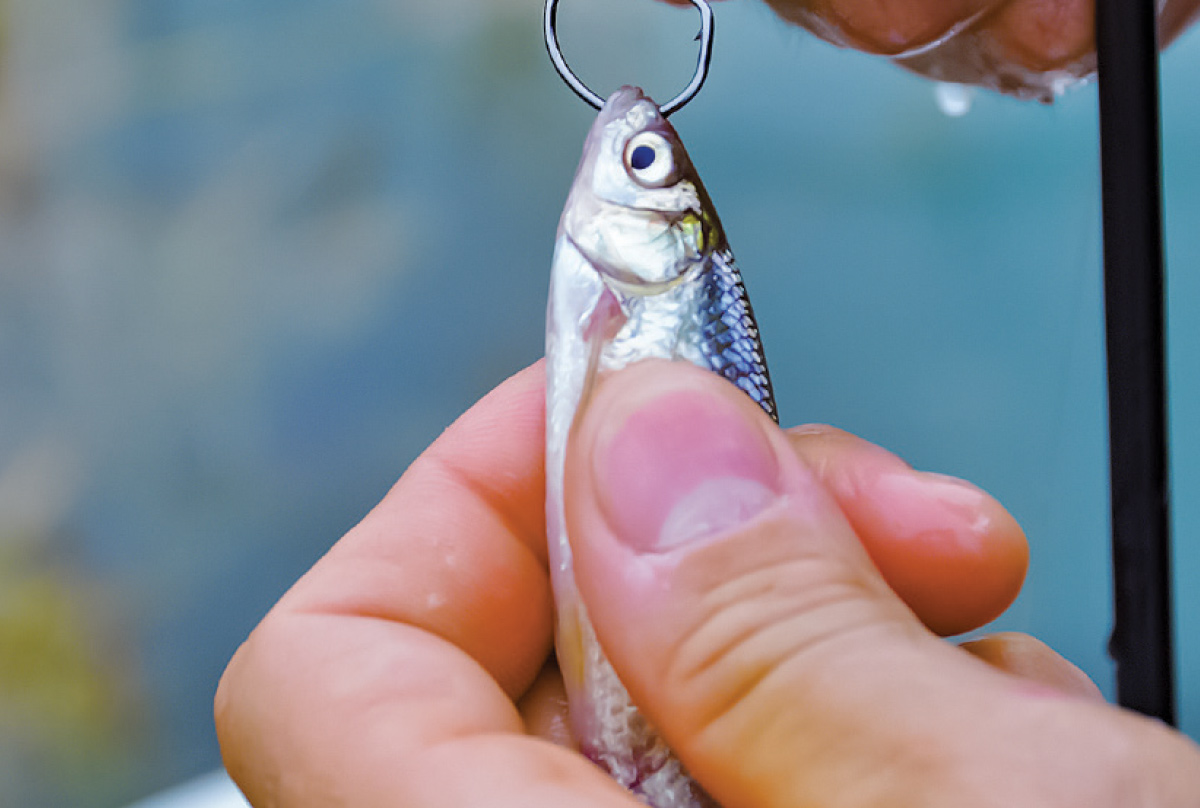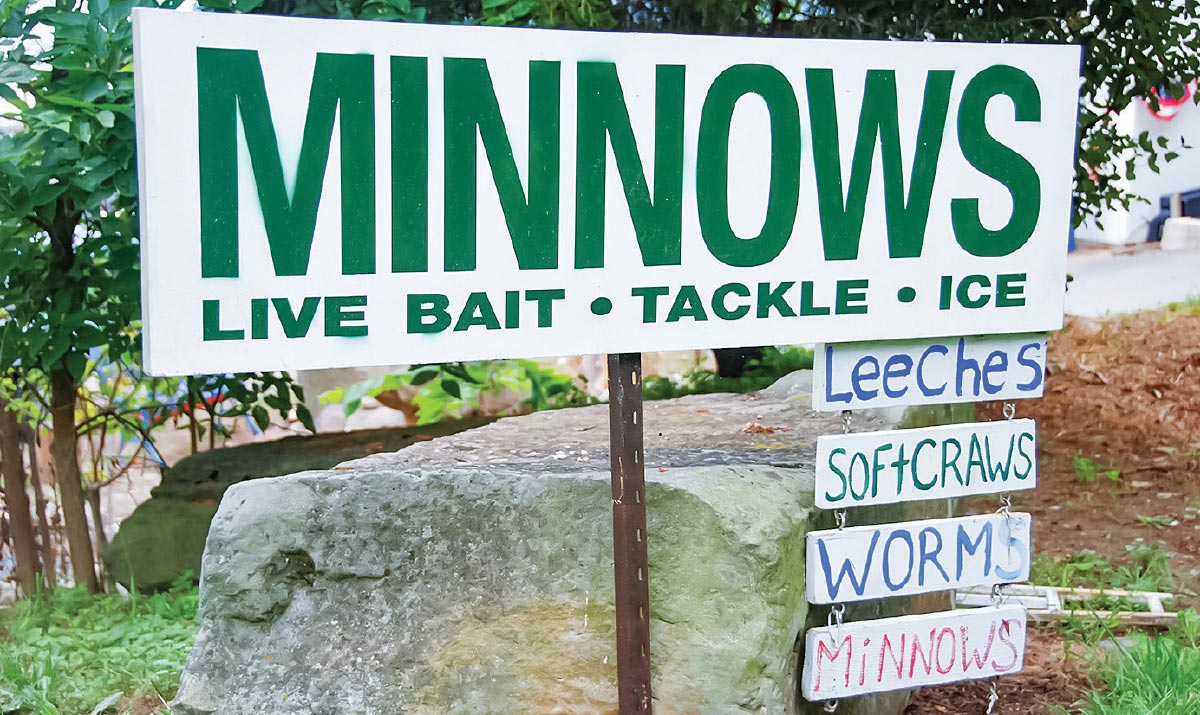


hances are, at some point this season you will want to try using live bait to catch the fish you want to catch. Offering fish the ‘real deal,’ living samples of the very food they crave, seems like a no-brainer, especially after attempting to fool the fish with imitations, from artificial lures to prepared baits, to no avail.
“Our minnows are guaranteed to catch fish—or die trying!” reads a sign in my local bait and tackle shop. And I’m betting that minnows are among the live baits you are considering. After all, we know that big fish like to eat little fish, and offering built-in swimming action a properly hooked fathead minnow, emerald shiner, shad or pinfish, the sacrificial preyfish will do most of the work of attracting a predator fish within chomping distance. All we need to do is present the finned offerings in waters when and where our target gamefish like to feed, wait as they ring the dinner bell, and hope our fishing tackle and experience stand up to the task of setting the hook, battling the fish boat-side, and getting the catch onto the deck.
Of course, there’s more to randomly impaling a minnow on a hook and casting it out into the water surrounding our boats to be consistently successful at catching gamefish with baitfish. Usually.
The best day of brook trout catching I’ve ever experienced took place during a fly-in fishing trip with my wife and young son to Northern Ontario. From our base cabin, one afternoon the three of us hiked to a small, remote lake said to hold big “squaretails,” a species I will go to great lengths to catch, of any size. After locating, bailing and then launching the battered rowboat the outfitter had stashed along the shore, I rigged the portable fish finder while my wife Maria readied the rods we had spooled with 4-pound test fluorocarbon line and rigged with light-wire hooks to catch the famously skittish brookies. Meanwhile, my 5-year-old son Ethan, bound in his PFD and slathered in sunscreen, was plopped on the center seat and handed his Zebco rod and reel combo. The plastic 202 reel was spooled with 10-pound test mono to which was still knotted a #6 baitholder hook left over from our last crappie fishing trip back home. A bucket of minnows we had trapped the night before provided our bait, an example of which I quickly impaled on Ethan’s hook and told him to drop over the side and wait—while Maria and I busied ourselves with the minutia of locating structure and baitfish and weedbeds below before we began finesse fishing for the trout as the boat drifted across the lake.


That was an exception. Typically the amount of effort exercised in the care, baiting and presentation of the minnows is in direct proportion to the size and number of fish you catch with live bait.
Springtime is a great time to use live minnows and to experiment with your presentations. Gamefish know that baitfish, which include minnows as well as other species’ young-of-the-year, will be gathered in the warming shallows. The gamefish such as bass and trout and crappies and walleyes congregate in the shallows both to spawn and to feed on the small fish they find there. Because the preyfish are feeding in shallow water, it’s easy to present live minnows a short length of line below bobbers. That makes it easier to cast than when longer lengths of line are required below the bobber to reach deeper fish. In fact, when you need to suspend your live bait offering in water more than about a rod-length deep, it’s time to consider using a slip bobber, which releases line until a knot or ‘stopper’ affixed to the line stops it on the bobber and suspends it at a predetermined depth. For details on using slip bobbers, stay tuned for a future bobber column.
America’s favorite panfish, crappies are famous for invading the shallows of waters across the continent early each spring. The “specks” congregate in tight schools in flooded shoreline brush, dead-fallen trees, weedbeds, docks and rocky rip-rap to spawn, and are pushovers for a live minnow dropped into the structure—sometimes in water as shallow as a foot.
Walleyes cruise the shallows as well, and also can be found—and caught hand over fist—when located on shallow rock reefs, sometimes far offshore, where they spawn and feed heavily on resident baitfish. Catfish are ‘game’ in the spring as well, although they often prefer their minnow baits to be dead.
Most gamefish, however, prefer their meals to be alive and swimming. In fact, many crappie anglers will remove a live minnow that has slowed its antics down, to replace it with a fresh baitfish that still has plenty of wiggle to attract their target. The same goes for trout, which prefer a lively live bait.
The key to keeping your minnows alive and finning is the care you offer them from the time they are dipped out of the bait tank and into your minnow bucket at the tackle shop until they are impaled on a (light wire). Get that bucket back into the water or the minnows into an aerated baitwell ASAP and avoid any drastic temperature changes by doing so gradually.
Use a small, light wire hook to affix the minnow to minimize trauma and maximize action, and experiment with hooking the bait lightly through both lips from the bottom up, under the dorsal fin on through the tail. Each causes the baitfish to display a different swimming action, one of which might prove to be more effective than another at enticing gamefish to bite in a given situation. The key is hooking the minnow “lightly,” just through the lips or under the skin. Any deeper will quickly kill the baitfish—and your chances at offering a lively meal that most gamefish have a hard time passing up.

Beam: 8′ 6″
Deck Length: 22’
Dry Weight: 2,506 lbs.
Max Passengers: 12
Fuel Capacity: 30 gals.
Max HP: 150hp
www.godfreypontoonboats.com